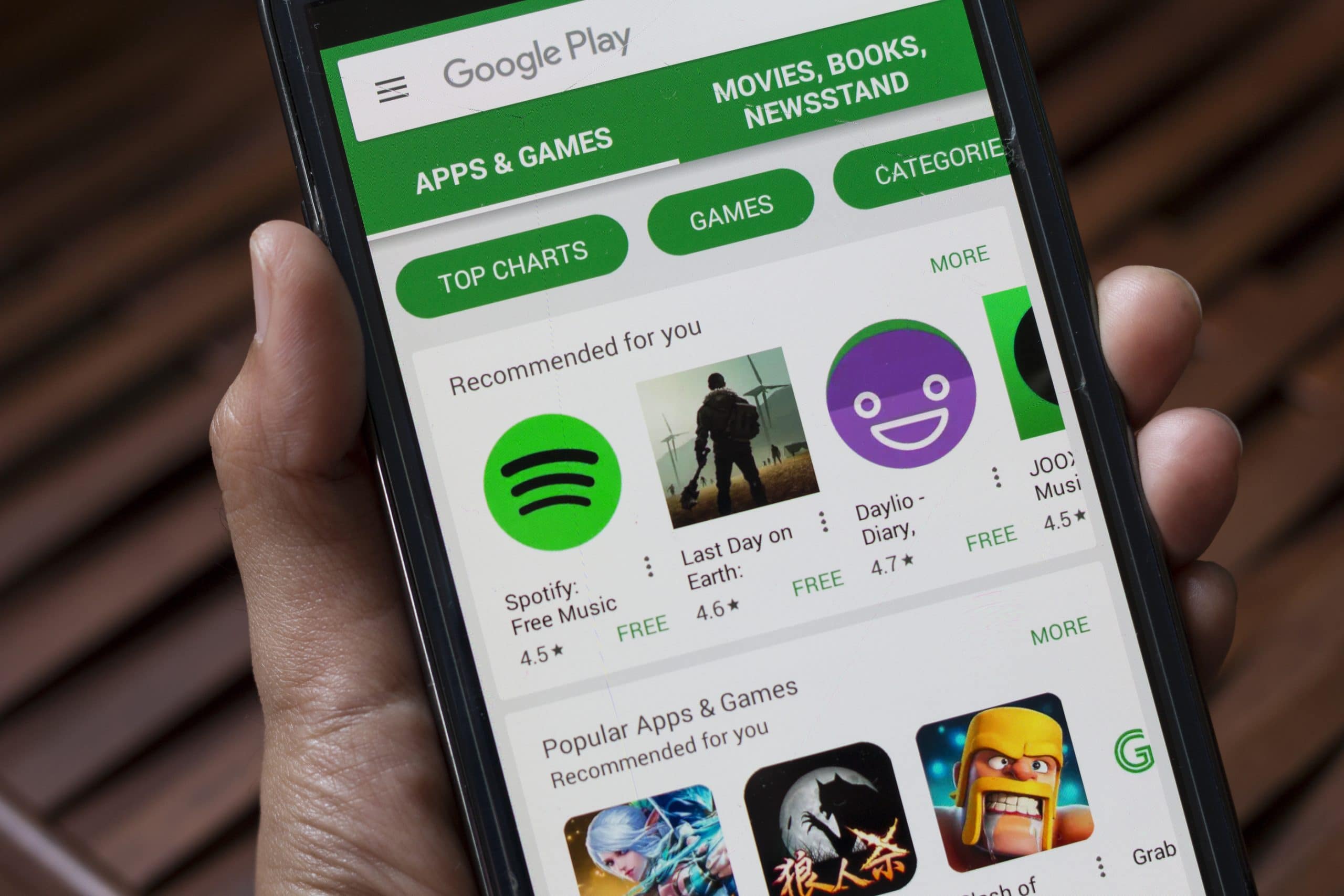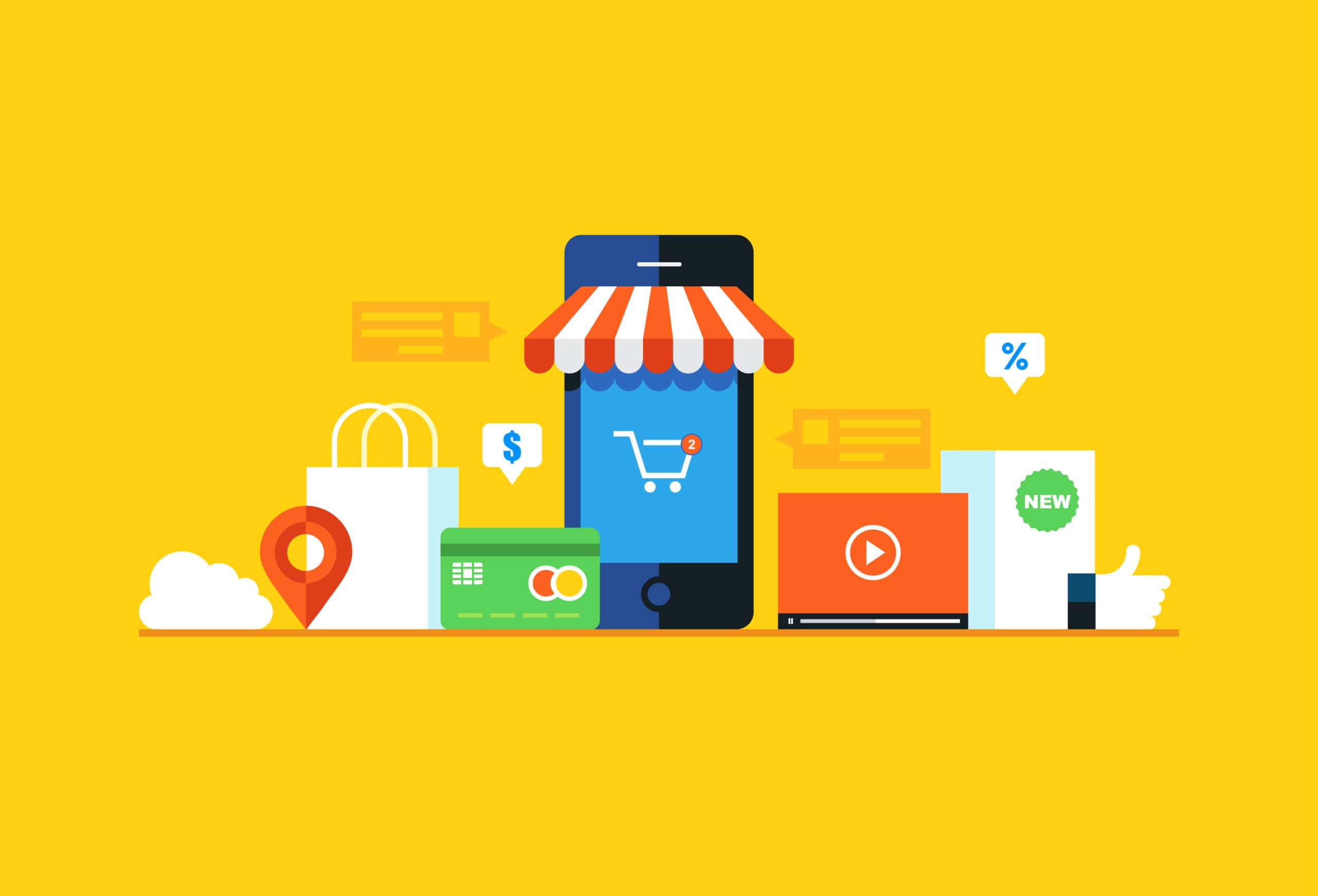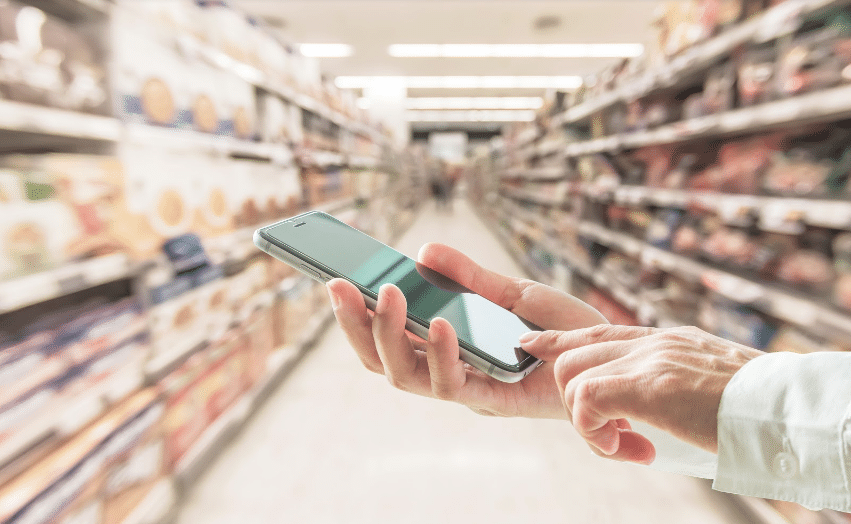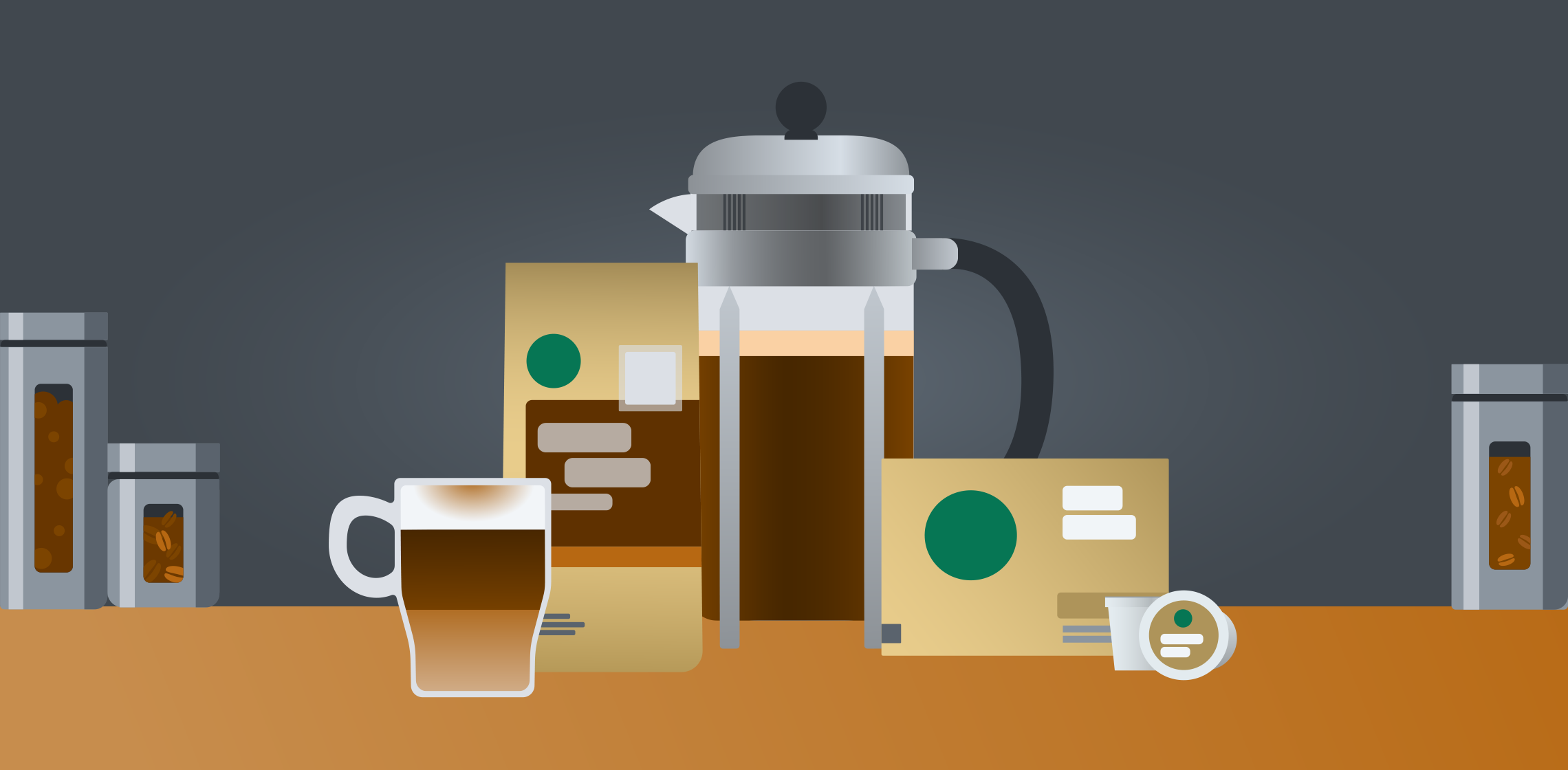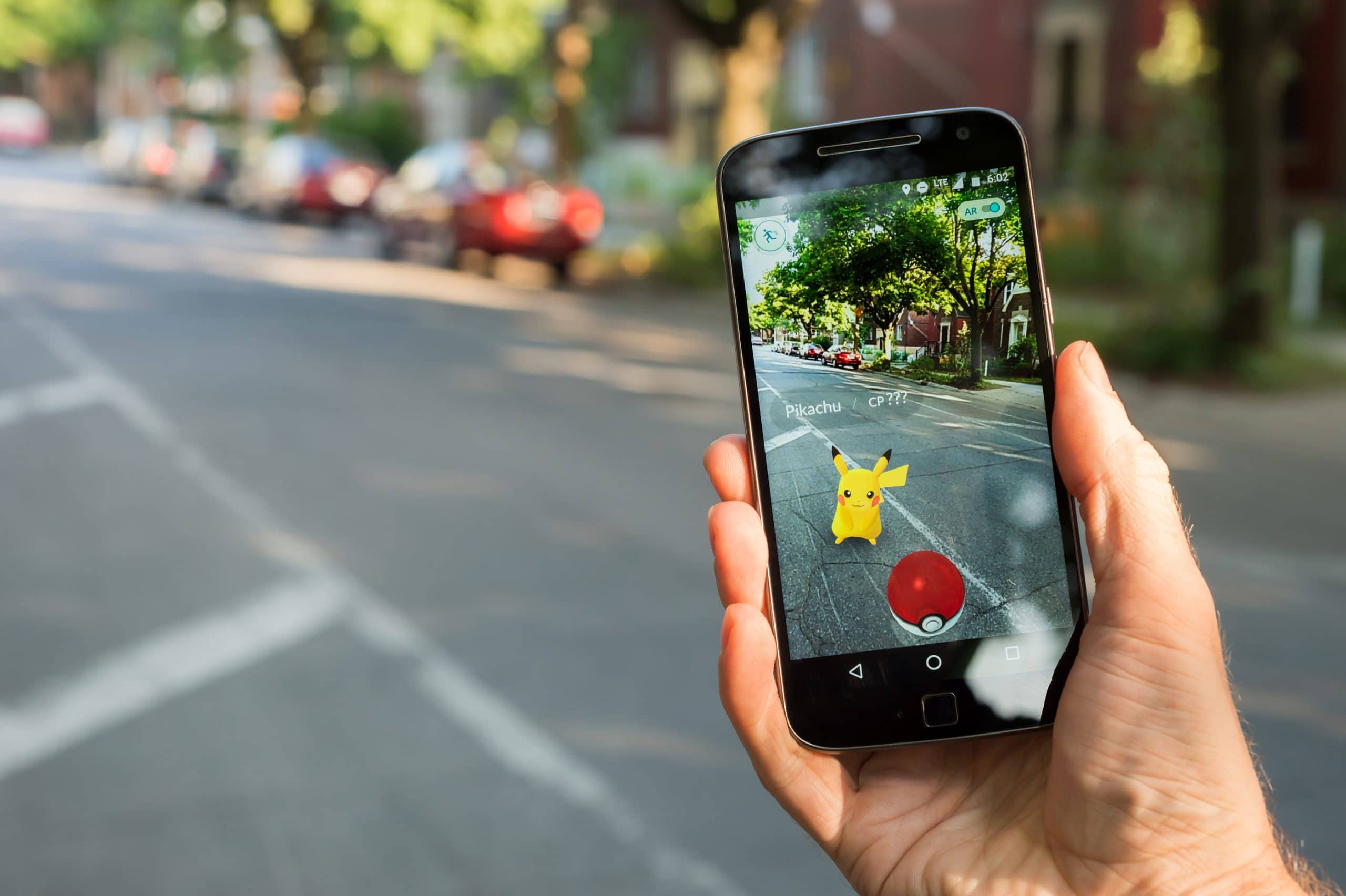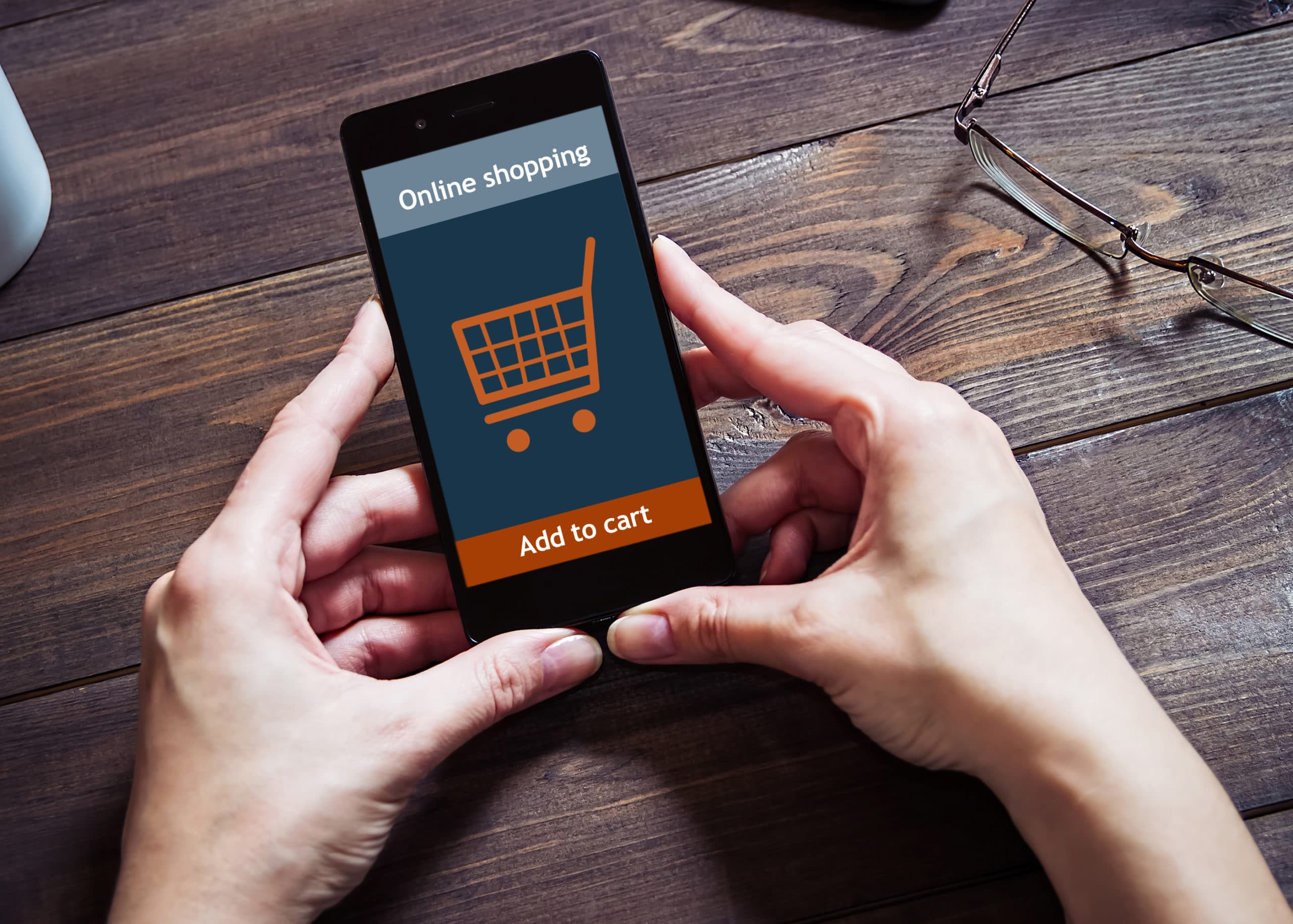Zeroing in on shopping behavior patterns and understanding signals of purchase intent helps brands improve purchase likelihood. Continue reading “Understanding shopping behavior patterns via third-party apps to increase sales potential”
Author: Kick Writers
3 techie-approved money making apps for Android phones
As a self-professed techie, I’m kind of picky about the apps that I download and use on my Android phone. I guess some might even call me a bit of a snob, and, hey, I admit it: I just don’t want to clutter up the home screen on my phone with a bunch of apps I don’t ever use, or even with apps that I’m not going to use all that much. Basically, when I download a new app, it has to be one that I’m really certain I’m going to get a lot from.
This is doubly true of money-making apps for Android phones. For those who don’t know, there are a lot of apps out there that advertise their ability to make you money, and, to be fair, plenty of them can. The thing is, I’m kind of a busy guy, and I don’t really want to mess with apps that aren’t going to make me much money. I’m also not a huge fan of apps that are going to take up a ton of my time. However, I have found three excellent money-making apps for Android phones that I would highly recommend.
The Best Money Making Apps for Android Phones No. 1: Make Money Earn Free Cash
The name for this app is hilariously straightforward: Make Money Earn Free Cash. Okay, I don’t know about you, but I’m on board with that, for sure. What makes this app even better is that it’s free to download via the Play Store on Android devices.
Simply put, this is one no-nonsense app, but it’s also fun to use, especially if you like learning about new apps. It’s pretty easy to use, too. All that you have to do with Make Money Earn Free Cash is download free apps, watch videos, and then complete offers from the sponsors, which usually involves signing up for mailing lists or taking surveys. Obviously, this isn’t always fun, but sometimes you learn about really cool new apps, and that can be a blast! When you’re ready, you can cash in your earnings via PayPal.
The Best Money Making Apps for Android Phones No. 2: App Trailers
 The best part about this second money-making app for Android phones is that it’s actually a lot of fun to use. It’s one that gives you rewards for watching videos, which is something I do a lot online anyway. However, with App Trailers you don’t get points for watching just any video, you have to watch the ones they want you to, but the cool thing is that they have a lot of videos about things like new tech and video games.
The best part about this second money-making app for Android phones is that it’s actually a lot of fun to use. It’s one that gives you rewards for watching videos, which is something I do a lot online anyway. However, with App Trailers you don’t get points for watching just any video, you have to watch the ones they want you to, but the cool thing is that they have a lot of videos about things like new tech and video games.
In the time that I’ve been using it, I’ve watched videos about games from EA, Rovio (which makes Angry Birds), and plenty of other companies that I like to follow in my free time anyway. The more videos you watch, the more points you earn. Eventually, you can trade those points in and get paid via PayPal or in Amazon gift cards. It’s definitely worth your while if you’re interested in games.
The Best Money Making Apps for Android Phones No. 3: Shopkick
I’ve saved the best for last here today. Of all the money making apps for Android phones on my list, this last one is my absolute favorite. It’s an app called Shopkick, and how it works is that it basically pays you to go grocery shopping or any other type of shopping for that matter. Shopkick gives you points for the things you do when you go shopping anyway, things like walking into stores, going down aisles browsing products, and making purchases. Yes, it really is that cool.
You can then trade those points in for gift cards to some of your favorite stores, including Starbucks and Best Buy, both which are absolute musts for a techie like me who never turns down a quick boost of energy. Speaking of being a techie, there are tons of ways that Shopkickers can earn rewards right from the app—no need to physically go anywhere. These ways include getting kicks for watching videos and instant surprise kicks from going on Easter egg hunts in the app. Users can also get amazing deals where you can earn big points and rewards by shopping on your phone at stores like Amazon and Walmart.com. It’s really great. I don’t know how I ever did my shopping without it, but I can tell you for sure that it wasn’t nearly as much fun.
Speaking of being a techie, there are tons of ways that Shopkickers can earn rewards right from the app—no need to physically go anywhere.
I hope you find these great money-making apps for Android phones helpful. I like all of these, obviously, or I wouldn’t have put them on my list, but if I had to recommend just one, it would definitely be Shopkick. Let’s face it, even if we don’t like to go shopping sometimes, we all have to do it. Having an app that turns shopping trips into a scavenger hunt that actually pays you is a real game-changer.
I highly recommend using Shopkick. There are, of course, tons and tons of apps out there to choose from, with more seemingly popping up every day. Shopkick, however, is one that I know you’ll be glad to have on your phone. I definitely am, and, in fact, I’m pretty sure that I use it every day!
Ready to start using your own techie-approved money-making apps for Android phones? Download Shopkick for free and join a community of loyal Shopkickers who’ve already discovered how rewarding—and fun—shopping can be!
And, if you love using your smartphone to stay up on social media, join us on Facebook, Twitter, and Instagram for daily shopping inspiration.
Image courtesy Creative Caliph
The top brand marketing strategy your CPG brand can’t ignore
There is one brand marketing strategy that companies—and especially CPG brands—can’t afford to ignore, and that strategy is mobile marketing. Continue reading “The top brand marketing strategy your CPG brand can’t ignore”
Why word of mouth marketing ideas are still powerful in the era of digital shopping
Word-of-mouth marketing ideas may be traditional, but they are even more applicable in the age of digital advertising. Continue reading “Why word of mouth marketing ideas are still powerful in the era of digital shopping”
3 ways to make money from home on your phone
Confession: I’m a homebody. Give me cozy pajamas, a full fridge, and my couch, and I’m perfectly content. Sure, I love the occasional brunch or happy hour, but nothing beats being home. That’s why I’m always on the lookout for easy ways to earn a little extra cash without leaving the house — and yes, it’s totally possible.
Here are three simple ways to make money from home, straight from your phone.
1. Take Surveys for Cash
It’s not the most exciting option, but survey apps do work. Just download one, fill in your profile, and start answering questions. The payout per survey isn’t huge, but it adds up — and you can do it all while binge-watching your favorite show.
Popular survey apps include InboxDollars, Swagbucks, and Toluna.
2. Watch Videos and Earn Rewards
Yes, really. Apps like Fronto or Swagbucks let you earn points just for watching videos, reading articles, or checking out product deals. You trade those points for PayPal cash, gift cards, or coupons. It’s super low-effort and easy to do from the couch.
3. Use Shopkick (My Favorite Way!)
If you’re looking for the most fun and flexible way to earn, Shopkick is where it’s at. You can earn “kicks” (Shopkick points) in-store and from home.
From home, you can:
- Watch short videos
- Discover new products
- Shop online at top stores like Amazon, Walmart, and eBay
- Join app-based scavenger hunts for surprise kicks
All those kicks can be redeemed for gift cards to your favorite stores — Target, Starbucks, Ulta, you name it.
Plus, Shopkick has an awesome online community. I’ve picked up shopping tips, shared laughs in the Facebook group, and felt right at home with other savvy users.
Ready to earn from the couch?
Download the free Shopkick app and start earning rewards today — no leaving the house required.
Shopper Marketing Best Practices: Lessons from Walmart, Target, and Whole Foods
Get your Starbucks fix at home (and earn kicks!)
Did you get your morning fix? If you did, it was only one (or two) of the 400 million cups of coffee Americans drink every day. Many of us can thank Starbucks for providing our morning cup of joe. Whether you’re a Starbucks fanatic or just like their vibe, you can now get kicks for Starbucks!
Earn kicks for Starbucks in stores

 Scan and submit receipts to earn kicks for select Starbucks ground coffee and K-Cups in stores like Walmart, Target, and many more. Open the app to find scans near you!
Scan and submit receipts to earn kicks for select Starbucks ground coffee and K-Cups in stores like Walmart, Target, and many more. Open the app to find scans near you!
Earn kicks for Starbucks online
You can also find your favorite Starbucks products online through Shopkick and earn kicks with every $1 spent on stores like Walmart.com, Boxed, Jet, and more.
Waking up is easy when you can enjoy your favorite cup of Starbucks coffee in the comfort of your home. With coffee this convenient, you’ll be ready for the day in no time.
Bring your Starbucks fix home with you, and go ahead and treat yourself to that second cup — you’ve earned it!
Don’t have Shopkick yet?
Download it now to start earning a free gift card for the shopping you already do!
Where the best deals on electronics are hiding on your smartphone
I have a confession to make: even though I’m a fully-grown, adult man, I have become just a little bit obsessed with playing Pokemon Go on my phone. Hey, what can I say? I don’t even have any excuses besides that you gotta catch ‘em all. Real Pokemon players will know exactly what I’m talking about with that one. Anyway, the thing I love about this game is that it pushes you to go out and use the Pokemon Go app to hunt for new Pokemon in all kinds of different places, from a park to inside the aisles at a grocery store.
I’ve played it so much, in fact, that the other day I started thinking about how great it would be if there was an app out there that paid me to do this kind of scavenger hunting in other ways. When I thought about it for a minute, I realized that there actually is an app that does that.
Today I’m going to go over the type of app I’m talking about, how you can use it to get paid for playing a fun scavenger hunt that’s pretty similar to that Pokemon game, and then how you can use your points from that game to find the best deals on electronics, that are hiding on your smartphone like a rare pokemon! Oh, and I’ll close by suggesting a specific shopping app that I think all electronics aficionados like myself must have on their smartphones.
Use Third-Party Shopping Apps to Earn the Best Deals on Electronics
The first step to finding out where the best deals on electronics are hiding on your smartphone is to learn what a third-party shopping app is and how it works. It’s actually a pretty simple concept. Third-party shopping apps give you rewards for shopping, or they help you save money on your purchases. There are actually two main types of third-party shopping apps that you should know about, which if you’re a Pokemon player like me isn’t that many at all, not compared to all the different Pokemon that are out there.
Anyway, the first type of third-party shopping app is called a coupon app, and how it works is actually super similar to old-school coupon clipping. Depending on the app, you can either sign up and select from a list of coupons that you apply to your purchases retroactively, or you can even use it to scan paper coupons and then show them to the cashier at the store in a much cleaner and more organized way. The other type of third-party shopping app (which I prefer) is a rewards app that gives you points for the things you do while you’re out shopping already, but we’ll go into more detail about that below. First, I want to talk about how these apps can turn shopping into a game where your prize is the best deals on electronics.
Use Third-Party Shopping Apps to Turn Your Hunt for Electronics Into a Game
 With the Pokemon Go app, even just taking a simple walk in the park feels like a fun scavenger hunt. Well, that’s how the best shopping apps work, too. You go out to the store, and you find yourself hunting for points, points you can later trade in to make sure that you get the absolute best deals on electronics.
With the Pokemon Go app, even just taking a simple walk in the park feels like a fun scavenger hunt. Well, that’s how the best shopping apps work, too. You go out to the store, and you find yourself hunting for points, points you can later trade in to make sure that you get the absolute best deals on electronics.
It’s really cool. I may have mentioned this before, but I’ve always been kind of shopping adverse. Not with these new shopping apps, though. Now, I actually look forward to my trips out to the store, even if I’m just going shopping for groceries. It’s all because of the cool incentive system. Hey, I’m a gamer. Give me a chance to earn points and I’ll jump at it every single time!
The Best Third-Party Shopping App to Find the Best Deals on Electronics
The last thing I want to do here today is give you a recommendation for a specific third-party shopping app that you can use both to turn your shopping trips into a fun game and to find points that you can trade for gift cards, which you can then use to find the best deals on electronics that are hiding on your smartphone. My favorite is this app called Shopkick, which basically works just like the scenario I described above. The app gives you points for a few different things that you do when you go shopping, things like walking into stores, going down aisles browsing products, and making purchases.
Unlike Pokemon Go, to play this game you don’t always have to get up and go somewhere. There are tons of ways that Shopkickers can earn rewards right from the app—no need to go anywhere at all. These ways include kicks for watching videos as well as instant surprise kicks for going on Easter egg hunts right on your smartphone inside of the app. Users can also get amazing deals where you can earn big points and rewards by shopping on your phone at stores like Amazon, Walmart, and more!
The first step to finding out where the best deals on electronics are hiding on your smartphone is to learn what a third-party shopping app is and how it works.
I suspect that one day I’ll get a little bit tired of hunting Pokemon. I mean, my entire life there’s always been a really cool new video game that comes along and makes the older games feel obsolete. That’s just how it goes, and I’m okay with it. I’m having fun playing Pokemon now while I still can.
However, I don’t think I’ll ever stop using Shopkick. I mean, it’s an app that both feels like a game and helps me get gift cards that I can use on electronics! It’s so good that I can no longer envision shopping without it, and that’s a very good thing.
Ready to start having fun with your shopping while at the same time finding the absolute best deals on electronics? Download Shopkick for free today and get yourself hooked up with a community of loyal Shopkickers who’ve already discovered how rewarding—and fun—shopping can be!
And, if you love using your smartphone to stay up on social media, join us on Facebook, Twitter, and Instagram for daily shopping inspiration.
Image courtesy Mbruxelle
Why integrated marketing communication is crucial for establishing consumer trust
Integrated marketing communication is more critical now than ever, as there are so many ways for brands to communicate with consumers. Continue reading “Why integrated marketing communication is crucial for establishing consumer trust”
Creative shopper marketing plans: How to grab the attention of your target audience
Creating a shopper marketing plan for a target audience requires a lot of insight. Brands must be prepared to do a deep dive into their ideal customer data to ensure delivery of messages at the right time, to the right group of consumers. A critical part of this is understanding and working with data.
With the right data, brands can connect with consumers based on their specific needs, as well as reach out to new consumers, or market new products. Data is available on just about every online platform. However, data which travels with consumers—like in the case of mobile shopping apps—can be particularly valuable. Using data helps in guiding brand marketing campaigns, which can, in turn, increase market share.
Deciphering Data for a Shopper Marketing Plan
Brands need to gain insight into their target audiences to create a marketing strategy around shopper behavior, That means finding the most useful, relevant data—the types of which can be broken down into four broad categories.
| Identity | Descriptive | Quantitative | Qualitative |
| This category covers the basics like name, address, email, phone number, and other fundamental identifying factors. | This data goes a bit deeper into identity, breaking down an individual’s socioeconomic class, marital, and family status. | Quantitative data is numbers-based. It’s used to determine how often a consumer makes purchases, how much they spend, and more. | This data is a way of measuring why a customer behaves in a certain way. The qualitative category is mostly subjective and centers on what drives customer purchase decisions. |
Marketers can use first-party data, or data given directly from the consumer to the company, when building a shopper marketing plan. For example, popular e-commerce retailer, Amazon, uses a consumer’s prior history on the shopping platform to provide them with future purchase recommendations. Alternatively, marketers can use third-party data, where available data is used or purchased from outside sources. Shopkick, for example, acts as an intermediary for third-party data because the app provides partnering companies with information regarding its users’ shopping behaviors.
Using Data to Target Shoppers
A good shopper marketing plan focuses on using prior behaviors to predict a shopper’s future purchases. More than a few brands have leveraged this tactic, including:
- Dannon: When Dannon wanted to promote a new line of natural yogurts, the brand had to consider their existing audience, which was made up primarily of older individuals who spent more time watching television than they did on digital media. As a means of creating a digital bridge for younger customers, Dannon offered a promo code during its TV commercials, which when sent via text, delivered mobile coupons for the new product.
- Pringles: When the brand wanted to create a new marketing campaign, they turned to social media data to help them locate trends surrounding their products. When doing so, they discovered many consumers were “stacking” flavors together to create new ones. This data led to the highly popular Flavor Stacking campaign, which leveraged an existing trend to create a unique experience for customers.
- Covergirl: Covergirl, along with many experts within the cosmetics industry, have noticed an increased trend of men using beauty products like bronzer, eyeliner, and brow gel, among others. The brand began hiring male models and cosmetics spokespeople in 2016, and since has continued with an inclusive focus on male cosmetics users to reach this emerging demographic.
 In all of these scenarios, brands recognized emerging trends by looking at both their existing data, as well as industry data. These strategies help brands reach new demographics as they’re taking shape, allowing them to cement themselves in before these trends go mainstream. A significant part of capitalizing on emerging trends is partnering with the right companies in order to gain access to third-party data.
In all of these scenarios, brands recognized emerging trends by looking at both their existing data, as well as industry data. These strategies help brands reach new demographics as they’re taking shape, allowing them to cement themselves in before these trends go mainstream. A significant part of capitalizing on emerging trends is partnering with the right companies in order to gain access to third-party data.
Accessing Third-Party Data to Build a Shopper Marketing Plan
While there are a plethora of opportunities in third-party data available to marketers, not all are equal. Some data may be able to provide necessary identity information. However, third-party shopping apps that connect with consumers in the shopping aisle can provide a greater array of information across the four data categories.
In many cases, brands can gain access to this data by partnering with outside companies, rather than merely purchasing this data. Partnering is often a better option, as it allows brands to continuously gather new information over time, which they can then use in conjunction with future marketing strategies. Other options include reviewing publicly available information on social media and other online platforms. Though, brands would do best to partner with a company experienced in gathering this data to ensure the process doesn’t become unwieldy.
Data is an essential part of a shopper marketing plan as it allows brands to get to know their audiences, capitalize on current trends, and increase the ROI of their marketing campaigns.
Data is an essential part of a shopper marketing plan as it allows brands to get to know their audiences, capitalize on current trends, and increase the ROI of their marketing campaigns. By partnering with third-party apps, these brands can open the lines of communication with consumers and ensure they’re delivering an excellent customer experience. This data doesn’t just help brands target current demographics, but also discover new ones and, with the right campaigns, grow their market share.
With Shopkick, our partners gain greater insight into their target audiences, enabling them to convert browsers to buyers. For more information, contact us.
Image courtesy of VectorKnight
How to use mobile apps to save money on groceries
I’m the type of person who is fully committed once I decide to do something. I’ve always liked to push myself. If I join a spin class, you better believe I’m going to try to ride harder every time I get on the bike. When I practice yoga, I’m forever trying to perfect my form on a new pose. Before my husband and I spent our summer vacation in Wine Country, I did weeks of research, essentially turning myself into a self-taught sommelier. I also apply this same approach to my shopping and the various ways there are for saving money.
At first, this meant staying vigilant in searching for unadvertised sales and discounts at department stores and fancy boutiques. Then, it evolved into using third-party shopping apps that gave me points for my purchases, points I could later trade in for gift cards. Now, my natural inclination to get more involved in everything I do has led me to use these same third-party shopping apps to save money when shopping for groceries. I’ve learned a lot about this and so today I’d like to share with you the top lessons I’ve learned when it comes to using mobile apps to save money on groceries.
Simply put, there is a lot to be learned and even more to save by diving into the world of apps to save money on groceries. However, there are a lot of ways to go about this and it can be a bit overwhelming at the start. Don’t worry, though, these three lessons should help you push yourself, too!
How to Use Mobile Apps to Save Money on Groceries Lesson No. 1: Do Your Homework
The first thing you need to do is learn all that you can about shopping apps, which come in a few different varieties. Here’s a quick primer to help you keep the three most common straight:
- Branded Shopping Apps: These apps that specific stores offer to give you savings and other benefits as an incentive to shop at their stores. One example is the Walmart Savings Catcher app, which automatically checks other nearby stores for lower prices and if it finds any, it deposits the difference between what you paid into an account for you to use on your next trip to the store.
- Coupon Shopping Apps: Basically, coupon apps work like paper coupons used to, in that they give you discounted prices on things you buy. There are many different types to choose from, some of which give you a percent off before you purchase things and others that involve scanning actual paper coupons to present to the cashier before you check out.
- Points-Based Shopping Apps: This is my favorite type of shopping app. In general, you can use these at many different types of stores, including grocery stores, and what they do is give you points for doing certain things while you’re there. Once you’ve earned enough points, you can later redeem them for cash back or gift cards (more on these later).
How to Use Mobile Apps to Save Money on Groceries Lesson No. 2: Be Consistent

Whichever type of app you choose, the key is to be consistent. Simply put, if you don’t use an app regularly, you won’t be able to reap any benefits. It sounds like common sense, but it’s true. To maximize your savings, you need to maximize the time you spend using the app.
One great thing about shopping apps, however, is that they make this relatively easy. The best of these types of apps are so simple that you can seamlessly integrate them into your shopping routine already. Most of the time, you can earn points and savings without going out of your way even a little bit. It’s a beautiful thing…trust me.
How to Use Mobile Apps to Save Money on Groceries Lesson No. 3: Find the Perfect App
Of our three lessons here today, though, I think the most important of them is to find the perfect app. In my opinion, the answer is this app called Shopkick, and how it works is that Shopkick gives you points for the things you do when you go grocery shopping already, things like walking into stores, going down aisles browsing products, and making purchases. As I described earlier, you can then trade these points in for rewards, which come in the form of gift cards that you can use at all your favorite stores.
For me, it’s easy to remember to use Shopkick every time I go out because Shopkick turns each trip down the shopping aisle into a game, and with my personality, I end up pushing myself to see if I can top my previous point totals. It’s actually a whole lot of fun! I use Shopkick whenever I go shopping for groceries, but one last thing I want to point out about it is that there are tons of ways that Shopkickers can earn rewards right from the app—no need to even go anywhere. These include kicks for watching videos, as well as instant surprise kicks from going on Easter egg hunts within the app. Users can also get amazing deals where you can earn big points and rewards by shopping on your phone at stores like Amazon, Walmart, and more! It’s all great, and super easy to use, too.
I think one parting bit of wisdom would be to just dive right in and start having fun with this!
I hope these lessons prove as useful to you as they have for me. I think one parting bit of wisdom would be to just dive right in and start having fun with this! That’s really what keeps me focused on most of my interests, to be honest. I have to love things like spin class, wine tasting, or grabbing points with Shopkick to really get into them in the first place.
One thing that always helps me get the most out of Shopkick is interacting with other Shopkickers on the app’s social media channels like Facebook and Instagram. It’s absolutely a ton of fun. You meet all kinds of other users who are always down to share tips about the app or tell jokes. Like everything else I do, I’ve also gotten really into that!
Learn more about one of the best apps to save money on groceries by diving into Shopkick. Download Shopkick now and get ready to be wowed. Welcome to the fun, Shopkicker!
If you’re as social media savvy as you are shopping savvy, join us on Facebook, Twitter, and Instagram for daily fun and inspiration.
Image courtesy dolgachov
10 effective online shopping marketing tactics for eCommerce retailers
Online shopping marketing is highly competitive as just about every brand, retailer, and company has a competing digital presence. Continue reading “10 effective online shopping marketing tactics for eCommerce retailers”


